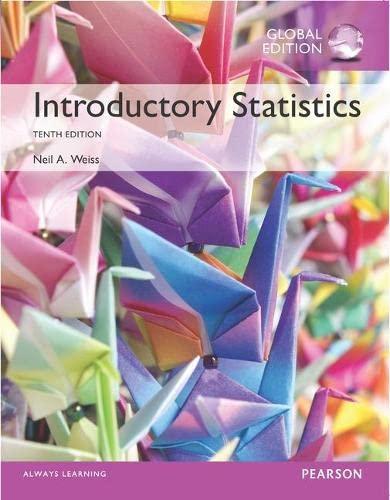Outliers and Trimmed Means. Some data sets contain outliers, observations that fall well outside the overall pattern
Question:
Outliers and Trimmed Means. Some data sets contain outliers, observations that fall well outside the overall pattern of the data.
(We discuss outliers in more detail in Section 3.4.) Suppose, for instance, that you are interested in the ability of high school algebra students to compute square roots. You decide to give a square-root exam to 10 of these students. Unfortunately, one of the students had a fight with his girlfriend and cannot concentrate—he gets a 0. The 10 scores are displayed in increasing order in the following table. The score of 0 is an outlier.
0 58 61 63 67 69 70 71 78 80 Statisticians have a systematic method for avoiding extreme observations and outliers when they calculate means. They compute trimmed means, in which high and low observations are deleted or “trimmed off” before the mean is calculated. For instance, to compute the 10% trimmed mean of the test-score data, we first delete both the bottom 10% and the top 10% of the ordered data, that is, 0 and 80. Then we calculate the mean of the remaining data. Thus the 10% trimmed mean of the test-score data is 58 + 61 + 63 + 67 + 69 + 70 + 71 + 78 8 = 67.1.
The following table displays a set of scores for a 40-question algebra final exam.
2 15 16 16 19 21 21 25 26 27 4 15 16 17 20 21 24 25 27 28
a. Do any of the scores look like outliers?
b. Compute the usual mean of the data.
c. Compute the 5% trimmed mean of the data.
d. Compute the 10% trimmed mean of the data.
e. Compare the means you obtained in parts (b)–(d). Which of the three means provides the best measure of center for the data?
Step by Step Answer:






